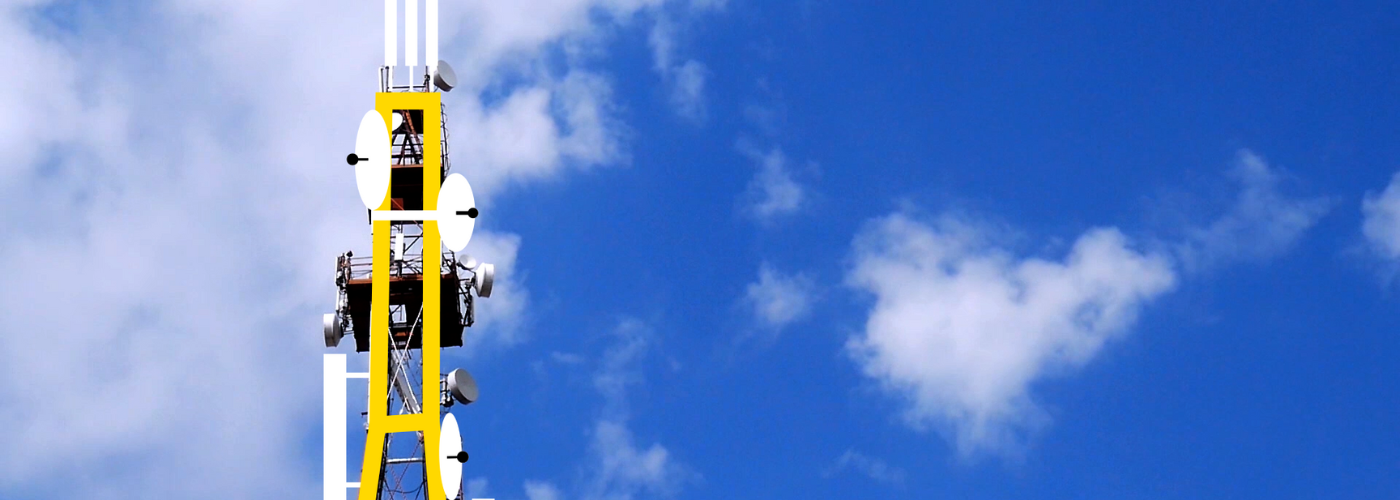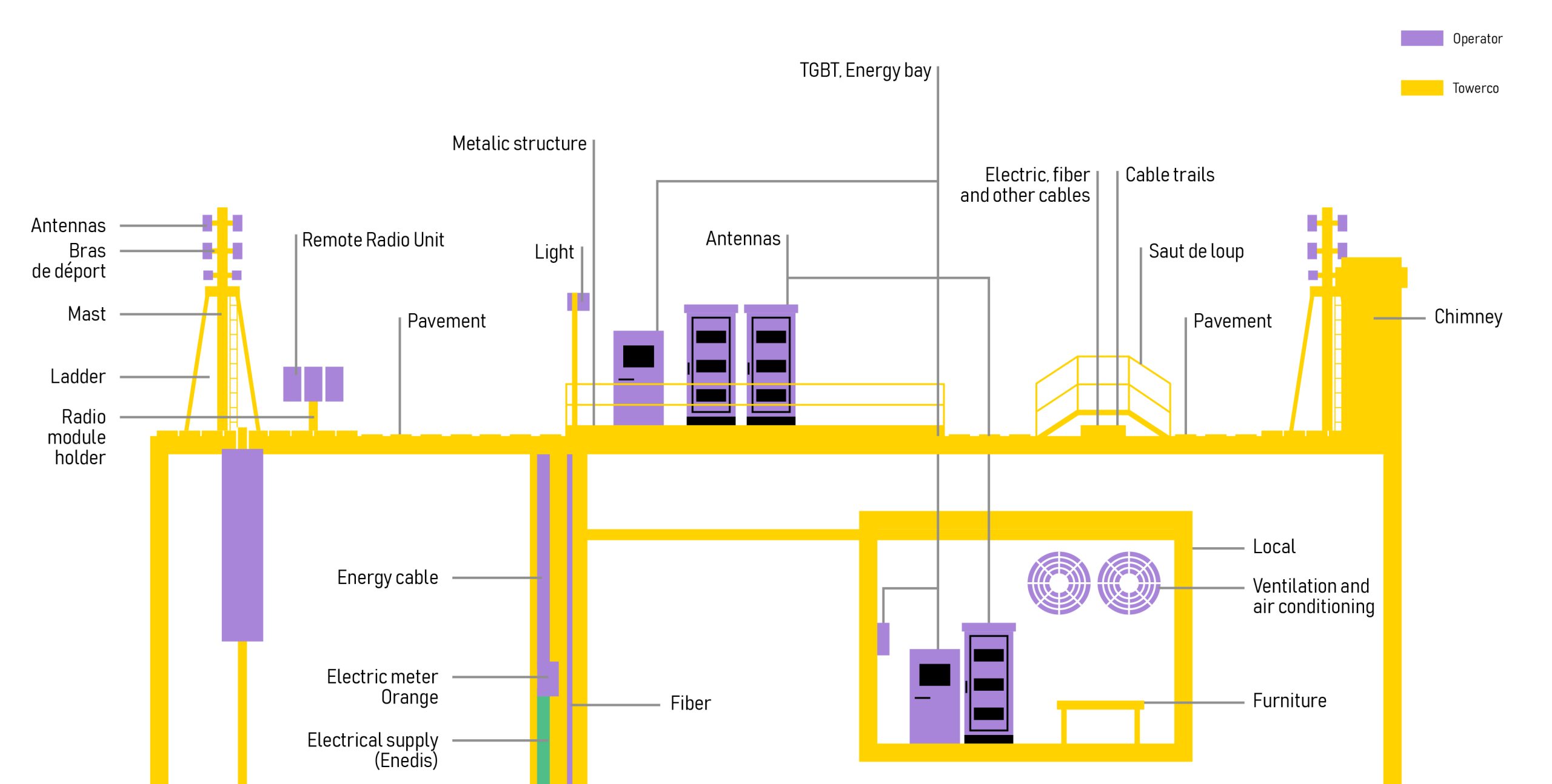
TowerCo: what is it?
Published at
Telecommunications towers were once the exclusive property of operators,but have become a real financial challenge while remaining an essential component of their network coverage. To continue the deployment of their antennas in a very competitive market driven by a major race for innovation (4G, 5G, etc.), telecoms have for the past ten years created new players responsible for managing and developing their mobile infrastructures: the TowerCos.
What is a TowerCo?
Their mission? Build, manage and maintain communications infrastructure. They host operators’ equipment (antennas), but also those of numerous connectivity players looking for high points (private networks, microwave links, TNT, radio, etc.).
Thus, a TowerCo is an independent company that builds, maintains and develops “passive” infrastructures to install the “active” equipment for telecom companies.
A “passive” infrastructure designates all the installations that have no direct impact on the network, unlike “active” infrastructures, such as telecommunications antennas, which emit a signal, and which are its source. A TowerCo therefore provides a support infrastructure to telecom players for their broadcast equipment.

Illustration of active and passive equipment on a site.
A TowerCo manages the “passive” tower that supports the “active” antennas (radio, mobile, television, etc.) of their client, but can also manage the enclosures that protect them, the concrete slabs that carry them, the surveillance cameras that monitor them… In short, all the power supply, safety, maintenance and support equipment. It is, in a way, the owner and caretaker of a building whose tenants are telecom players.
As a good guardian, it also maintains dialogue with local partners to meet the demand for coverage while respecting owners and neighbours of these infrastructures, because in a world more connected than ever, their presence is now essential.
How does a TowerCo work?
The TowerCo rents space on its infrastructure. Its tenants are responsible for the installation of active equipment including power cables connecting the antennas with the radio equipment and the fibre optic connection to the central network.
For more details, here is a more complete list of TowerCos missions
- To provide the physical site and manage related real estate contracts;
- To install and maintain the passive infrastructure (tower structure, management of civil works, securing access, shelters and possibly power and cooling systems);
- To support for landlords during their contract;
- To respect health and safety codes during interventions and provide easy access to the site.
How did the first TowerCos appear?
The TowerCos model first appeared in the United States when the heads of three American companies: Steve Bernstein Associates (now SBA Communications), Castle Towers (now Crown Castle) and American Radio marketed rental space on their telecommunications towers so that other broadcasters can benefit from their infrastructures without having to build their own.
These transactions were then based on the Towersharing model of “Steel & Grass”. This meant that these early TowerCos would only be responsible for providing the tower structure (the steel) and the location (the grass). Since then, the business model has evolved to offer tenants security, energy supply and maintenance and has spread throughout the world.
Where are the European TowerCos?
In recent years, most of the telecom operators in Europe have chosen to entrust their infrastructures to TowerCos, in order on the one hand to make their assets more profitable and on the other hand, to free up the investment capacities necessary to their development (in particular to continue the deployment of mobile networks and fibre optics which require significant investment).
To meet the growing connectivity needs of individuals and businesses, operators must continuously invest in new technologies and the networks of tomorrow. The TowerCos support operators in this process. Thus, as of July 14, 2022, Deutsche Telekom, the share of independent TowerCos in Europe has increased in recent years from 13% in 2014, to 17% in 2018 and 35% in 2021. It remains low compared to other regions. In comparison, this share reached 90% in the United States, 55% in Central and Latin America and 52% in India in 2018.
Among the six major European telecom operators: BT, Deutsche Telekom, Orange, Telecom Italia, Telefónica and Vodafone; Orange occupies a unique position. The French operator is the only one to have chosen to retain control of TOTEM, the industrial TowerCo in Europe created at the end of 2021 to manage more than 27,000 sites in France and Spain.
What is the share of independent TowerCos?
According to a report by EY-Parthenon, the share of independent TowerCos in Europe has increased in recent years from 13% in 2014, to 17% in 2018 and 35% in 2021. It remains low compared to other regions. In comparison, this share reached 90% in the United States, 55% in Central and Latin America and 52% in India in 2018.
What is the future for Towersharing in Europe?
The TowerCos model is based on a “sharing” of infrastructures for several actors. Locations on high points, whether in cities or rural areas, are particularly expensive to deploy and consume raw materials (concrete, steel). The TowerCos allow by renting spaces on their infrastructures, to all the operators who wish it and actors of the IoT connectivity (the Internet of Things, technologies that connect and exchange data), smart city, actors of TNT or radio… It is a deep evolution of the model which makes it possible to go further in the deployment of connectivity solutions while having a responsible approach to the footprint of these infrastructures on the landscape and thus reducing energy consumption on a constant basis.
What makes the European landscape of TowerCos unique compared to the rest of the world is mainly the European Union’s desire to facilitate the deployment of connectivity solutions to go further in the coverage of territories where deploying a mobile network is particularly difficult and expensive. Going through a TowerCo for the management of passive infrastructures, allows operators to reduce their installation costs, maintenance in these areas and energy consumption.
And the rest of the world in all this?
To this day, the TowerCos model continues to grow around the world.
Several experts agree on the fact that this decade will see the TowerCos emerge from their role of simple infrastructure manager to become the catalysts of connectivity by also diversifying their activity as we are beginning to see towards the cloud, IoT solutions or connectivity in closed places (subways, stadiums, performance halls, offices).
By delegating the management of their infrastructures, telecom operators will be able to focus on new offers in terms of connectivity, while allowing TowerCos to develop and optimise the deployment of their infrastructures.
What is the link between the development of TowerCos and the arrival of 5G?
According to the website Servicesmobiles.fr, the development of TowerCos could free up around 28 billion euros of capital, which telecoms can reinvest in their networks, in order to improve coverage and accelerate 5G deployments.
5G is very investment intensive. To keep its promises, it requires a massive amount of data and a very fine mesh of sites. Additionally, the deployment of 5G NR (“New Radio”), the new global standard for a unified and higher performance 5G wireless air interface will increase the need for tower space.
